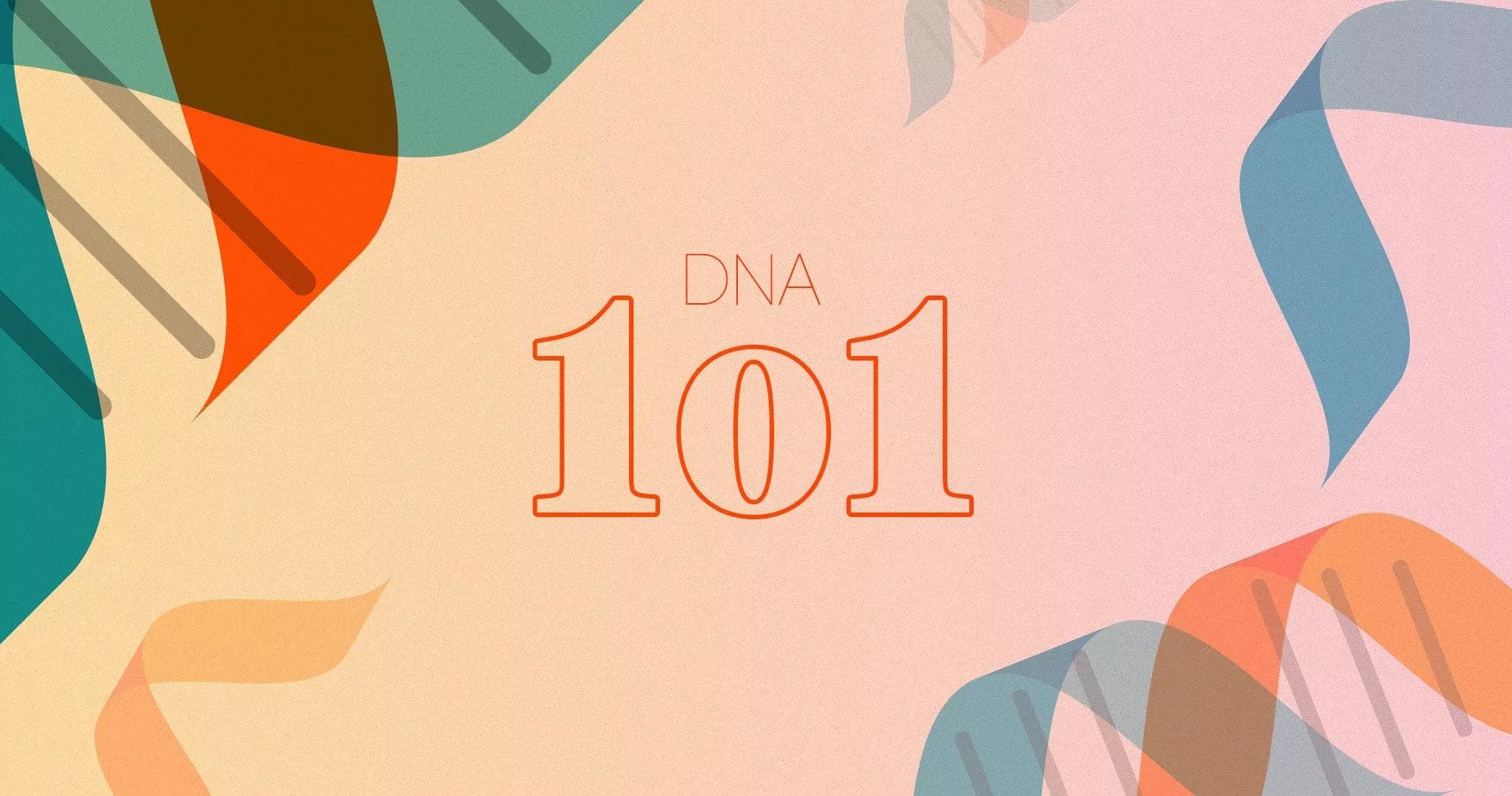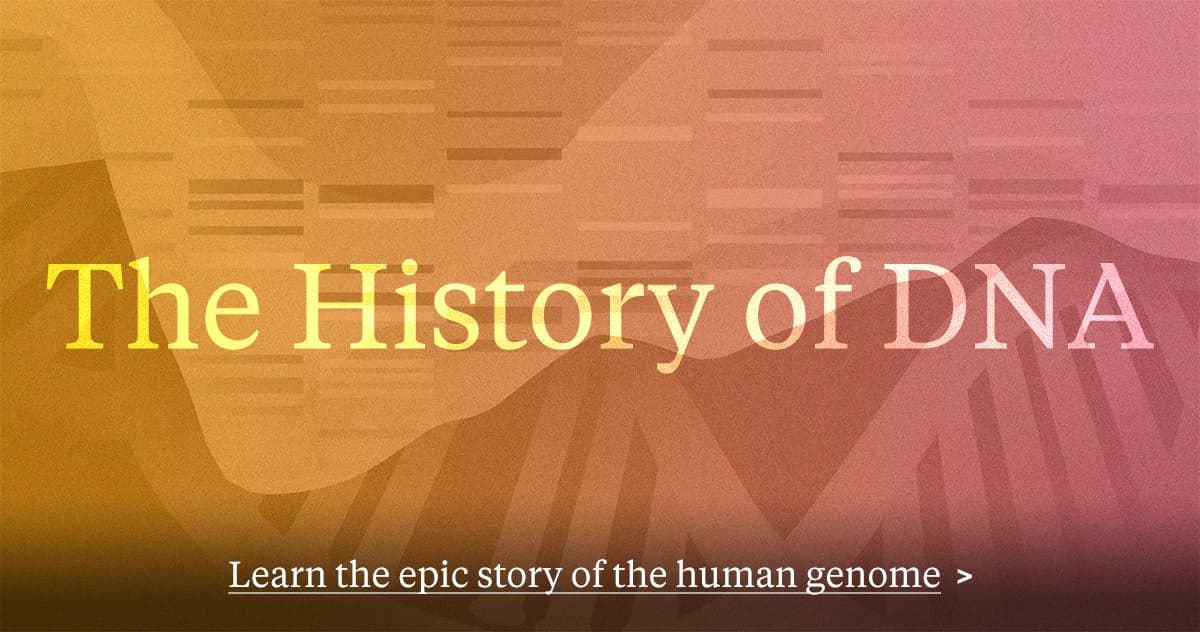What’s in our DNA that makes us all different?

We all know that person (it might even be you!) who can drink a big cup of coffee before bed and then seemingly go right to sleep. In some cases, there can be a genetic explanation: DNA can help certain people process caffeine faster than others. This isn’t just true for caffeine metabolism; in fact, many of our traits are influenced by small changes in our DNA, also known as variants. Humans have thousands of these changes, and they help make us who we are. But not all variants are created equally—some have a large impact on our traits, while others have no impact at all. To understand how variants in your DNA may be influencing your traits, it can help to understand what the different types of variants are.
It can help to think of your DNA as a large cookbook, full of recipes for different foods. If there’s a typo somewhere in the book, it could have a big impact—or no impact at all, depending on where the typo happens. Consider a recipe for cookies that instructs you to add “1 stick of butter.” If a variant changes the “1” into a “4,” your cookies won’t come out right. If, on the other hand, a variant is a typo which makes the word “stick” to “stikk,” you’ll still get the point and the cookies will be fine.
What’s important to notice here is that both the location of the variant, and the type of change matters. In this example, variants occurred in the same recipe, but they didn’t have the same effect. In the same way, the locations of variants in your DNA matter. Your DNA contains genes which tell the body how to build proteins. Those proteins then go on to influence your traits—like hair color, the ability to digest dairy products, or the ability to drink coffee before going to sleep. Just like the relationship between the recipe and the cookies, a gene’s DNA sequence can affect the shape and function of your proteins, ultimately influencing your traits.
In a recipe book, letters and numbers are arranged in a particular order to form words and stepwise instructions. Similarly, DNA is made up of four deoxyribonucleotides which can be represented by the letters A, T, G, and C. The information to make proteins is stored in 3-letter codes, or codons, in your DNA. Each codon tells the body to add a specific amino acid to the protein. The codon TTT tells the body to add a phenylalanine. The codon TTA tells the body to add a leucine. And so it goes for all 20 amino acids. Since there are 64 different 3-letter combinations of the 4 DNA bases, there is some overlap, where multiple codons are used for a single amino acid. Phenylalanine, for example, is coded for by both TTT and TTC.
It’s at this level where variants can alter the shape and function of a protein, so a variant in the protein coding region of a gene would change the letters of the codon—which in turn may change the amino acid that it codes for. Consider the following scenarios where a variant can have a big impact, or no impact at all: A gene coding for a protein instructs the cell to add the amino acids phenylalanine and then leucine using the codons “TTT-TTA.” In one scenario, a variant in the DNA results in the codons “TTA-TTA.” The protein now has two leucines and no phenylalanine, which may change its function and shape. Depending on the protein, this could impact your traits. If, instead, the variant in the DNA results in the codons “TTC-TTA,” the outcome will be different. The first codon changed, but it still codes for phenylalanine. The protein shape and function is not affected by the variant.

Correlation vs causation
For some variants, we know they are common in people with a certain trait, but don’t yet understand if the variant is actually having an effect. It’s possible that this variant does cause the trait, or that there are other variants near to it that are actually responsible. For variants like this, researchers would say that it is correlated with the presence of a trait, but not that it causes the trait.
You can see that the location and type of change matters, just as it does for typos in a book. These are just two examples for how a variant may affect the amino acid sequence. Variants like the one represented in the first scenario are known as a missense mutations because they cause one amino acid to change to another. Variants like the one shown in the second scenario are considered silent mutations because they have no effect on the amino acid sequence. Other potential variants not shown here include nonsense mutations in which the change in letters causes the cell to stop making the protein prematurely—resulting in an incomplete protein. It’s also possible for letters to be added or omitted from the sequence, which can have various impacts on the final protein product.
The bottom line is that not all variants are the same. You could have two variants in the same gene, but only one of them has an impact on you (if either them have any impact at all). Because of this, simply having a variant in a gene doesn’t mean the variant is important. In order to understand if a variant actually affects your traits, scientists have to first identify the its location within the gene, determine if it has altered the amino acid sequence of a protein, and then figure out what impact that change in the protein has had. This is a long and arduous task that requires many researchers, but it allows us to definitively say that a specific variant is having a specific effect on your traits.